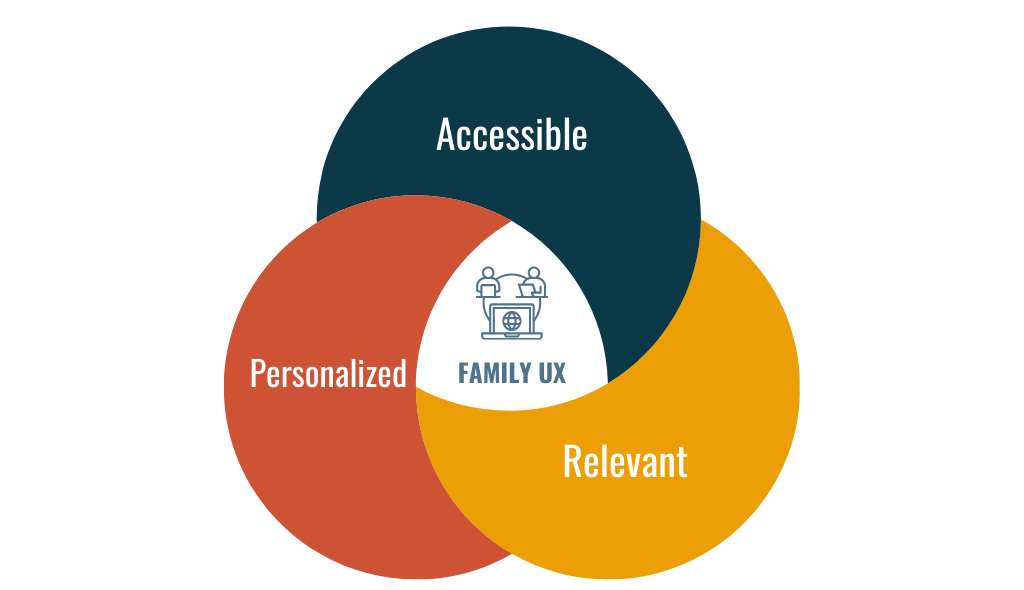The Importance of a Family-centered Marketing and Retention Communication Strategy

Every school aims to put families at the heart of its marketing and communications strategies and tactics. However, the reality is that the desire for efficiency (often due to an under-resourced MarComm department) coupled with the volume of information that needs to be shared frequently results in a school-centered approach instead.
The paradigm is shifting. Driven by the long-held knowledge that educational success comes from a strong school-family partnership, we now recognize the partnership begins from a family’s very first touchpoint, whether digital or in-person.
Understanding Family-Centered Communication
When families are in the process of choosing a school for their child, they are not just evaluating academic programs or facilities—they are assessing how well the school aligns with their values, needs, and expectations. Similarly, families who are already enrolled continually evaluate their ongoing experience, which influences their decision to stay and advocate for the school. Family-centered communication is the key to meeting these needs at every stage of the journey, from initial inquiry through to enrollment and beyond.
During their exploration and research phase, the communication a family receives plays a crucial role in shaping their perception. They are looking for a school that not only provides an excellent education but also understands and supports their entire family and you can be sure they are connecting their communication experience with your school to their perception of the quality of education offered.
Effective family-centered communication during this phase should make the process of learning about the school, asking questions, and navigating admissions as seamless and personalized as possible.
For example, when a prospective family first inquires about the school, they should be met with clear, accessible information tailored to their needs—whether it’s understanding the curriculum, exploring extracurricular offerings, or learning about community involvement. Timely follow-ups, personalized tours, and content addressing their specific concerns can significantly enhance their experience and make them feel valued.
For families already part of the school community, the focus shifts to ensuring they continue to feel engaged, supported, and appreciated. These families need relevant updates that pertain to their child's progress and the overall school environment as well as personalized communication that reinforces their decision to enroll in your school.
This type of content should include (but is not limited to) celebrations of new or re-accreditation milestones, thought-leadership content, stories that demonstrate the strategic plan in action, parent education content to help as they guide their child through life and education, and learning stories that offer parents a peek inside the classroom and learning experiences.
At the core of this communication approach are three key principles: Accessibility, Relevance, and Personalization. These principles intersect to create a holistic family experience that is integral to effective communication and educational success.

These principles are essential for creating a meaningful experience for families, whether they are new to the school or long-standing members of the community.
- Accessibility means that information is easy to find, understand, and access, regardless of where the family is in their journey. For prospective families, this could be a well-organized website, a personalized inquiry management automation strategy, and a responsive admissions team. For current families, it might involve user-friendly digital portals or easily navigable communication platforms such as a blog section.
- Relevance ensures that the communication families receive is directly applicable to their current needs. For prospective families, this could involve providing specific information about programs of interest or logistical details about the admissions process. For enrolled families, relevance might mean receiving news stories demonstrating student life, learning in action, or resources that support their child’s development.
- Personalization acknowledges the unique needs and preferences of each family. For a prospective family, this could be a personalized follow-up after a school tour or a tailored information packet that speaks directly to their questions and concerns. For current families, it means ongoing, individualized communication that reflects their experiences, such as opportunities to engage in school activities that align with their interests or parent-education pieces that strengthen the parent-school partnership and their child’s holistic development.
Let’s explore each of these three areas in further detail.
Accessibility: Ensuring Inclusive and Easy-to-Locate Communication
One of the fundamental pillars of family-centered communication is accessibility. For communication to be truly effective, it must be accessible to all families with information that is easy to find and locate within the school's digital media presence. This means that schools must take proactive steps to ensure that communication is clear, understandable, and easily navigable across various platforms to cater to the diverse needs of families.
Accessible communication involves:
- Ease of Navigation: Ensuring that the school's website and other digital platforms are user-friendly and well-organized so families can quickly find the information they need. This includes having a clear and well-organized menu structure, a search function, and logically categorized content.
- Clear and Simple Language: Avoiding jargon , acronyms, or “education-speak.” Using plain language makes it easier for all families to understand important information and instructions.
- Accessible Formats: Providing information in multiple formats, such as PDFs, videos, interactive publications, and infographics that are easy to access and download will accommodate different preferences and technological abilities.
- Consistent Updates: Regularly updating digital platforms with the latest information ensures that families have access to current and relevant content. This prevents the frustration of searching through outdated or irrelevant material.
Relevance: Aligning Communication with What Fosters Connection
Relevance is key to creating a meaningful family-centered marketing and retention strategy. Content should not only be accessible but also address the interests and values that keep families interested in, engaged with, and loyal to the school community. This involves sharing information that highlights the school’s unique strengths, celebrates the community, and encourages families to feel proud of their choice.
This type of communication is often reserved for the monthly newsletter sent out to current families however, the same principles apply to families who are at the beginning of their relationship with the school. Imagine the impact that would be made on family when they receive relevant communication that includes:
- Timely and Valuable Information: Keep families informed about upcoming events, milestones in their application process, or opportunities that are directly relevant to them, such as new programs, open houses, or parent engagement activities.
- Learning Stories:
Highlight the different learning experiences children engage in throughout their education. For example: create stories that make the connection between what’s happening in the classroom and the concept of inquiry-based learning. Share the how, the why, and the outcomes.
- Highlights of Community Involvement: Showcase opportunities for families to get involved and celebrate the participation of those who already are. Whether through volunteering, attending events, or participating in parent-led initiatives, these stories foster a sense of belonging and help families feel more connected to the school.
- Stories about School Culture: Provide families with content that reflects the culture and values of your school—whether it's updates on school traditions, celebrations, or the impact of community service projects. This strengthens the emotional connection families have with the school.
When communication is relevant and reflects what families care about, they are more likely to stay engaged, champion the school, and feel confident in their decision to be a part of the community.
Personalization: Tailoring Communication to Strengthen Family Engagement
Personalization is the third pillar of a family-centered marketing and retention strategy. Each family has unique perspectives, interests, and reasons for choosing your school. Personalized communication shows families the school values their individual journey and is committed to building lasting relationships.
Personalized communication involves:
- Personalized Storytelling: Recognizing the unique priorities and interests of each family allows schools to tailor messages that speak directly to what matters most to them. If a family is interested in the Arts, send them a collection of stories demonstrating what the Arts look like in your school. If you know STEM is important to them, likewise, curate a group of relevant stories.\
- Customizing Engagement Opportunities: Offering personalized opportunities for families to engage with the school, such as inviting them to events that align with their interests reinforces their connection to the school.
- Building Strong, Individualized Relationships: Whether digital or person-to-person, regular, meaningful interactions for families who are considering your school or those who are part of the community help establish and nurture strong connections..
By personalizing communication, schools demonstrate that they understand and care about the unique needs and preferences of each family. This helps build trust, encourages active participation, and ultimately creates stronger, long-lasting relationships between families and the school.

The Impact of Family-Centered Content and Communication for Schools
A family-centered content and communication strategy offers significant advantages for schools. By prioritizing the needs and perspectives of families, schools not only strengthen relationships but also gain valuable benefits that directly support their growth and success.
Below are some key ways a family-centered approach positively impacts your school:
- Competitive Differentiation: Schools prioritizing family-centered content and communication have a competitive advantage: they have created a differentiated experience for parents. In a market where families have more choices for their child’s education than ever, this approach increases the likelihood of attracting and retaining mission and values-aligned families.
- Improved Word-of-Mouth: We all agree that word-of-mouth is a powerful–if not the most powerful– tool a school has. A family-centered approach ensures families feel valued while also helping them as they become champions of your school because you’ve provided them with information and stories to share in their circles of influence.
- Cost-Effectiveness: There are two ways a family-centered MarComm strategy is a cost-effective investment. The first is that it is less expensive to retain a family than to find a new one. Secondly, the investment into creating the content and strategy is two-fold because those stories can be used for nurturing families in the inquiry stage as well as reinforcing a current family’s decision to choose your school. Incorporating family-centered content and communication strategies is not just about enhancing the educational experience; it’s a strategic move that directly influences a school’s ability to attract and retain students.
By creating an environment where families feel seen, heard, and valued, schools can ensure sustained success and a thriving community.
Practical Strategies for Implementing Family-Centered Communication
Implementing family-centered communication requires intentionality and a commitment to understanding the unique needs and interests of each family. Here are some practical strategies that schools can use to foster a family-centered approach:
- Use Family Survey Data: Most schools regularly survey their families, but how many utilize that data to inform their MarComm strategy? The next time a family survey is in the planning stages, consider including some questions that might help you refine your MarComm strategy and perhaps even find new ways to segment your audience.
- Use Marketing Automation: Implement marketing automation tools to personalize communication and enhance engagement with families. Automation can help segment your audience, ensuring that families receive relevant and timely information based on their interests and behaviors. Automated email nurturing campaigns can also deliver targeted content that keeps families connected throughout their journey with your school.
- Offer Professional Development: Provide training for staff on the importance of family-centered communication and how to integrate it into their daily interactions. This professional development strengthens the school’s overall approach to family engagement.
- Improve the Inquiry Form:
Use your inquiry form to gather important information from prospective families that will help personalize their journey. By asking thoughtful questions about their priorities, concerns, and interests, you can tailor your communication to address their specific needs and provide a more meaningful experience.
By adopting these strategies, schools can create a culture of family-centered communication that strengthens relationships, enhances engagement, and reinforces their value to the school.
The Future of Family-Centered Communication
As the landscape of education continues to evolve, so too must the ways in which schools communicate with families. The future of family-centered communication lies in creating more personalized, accessible, and relevant communication experiences that go beyond basic engagement. Schools that invest in understanding the unique needs and values of families, while leveraging technology like marketing automation and data-driven insights, will foster stronger connections and trust within their communities.
This approach is not only about attracting prospective families but also about nurturing and retaining those already part of the school. As competition grows and families become more selective, the schools that embrace a family-centered strategy will stand out for their ability to offer meaningful, supportive, and dynamic relationships.
Ultimately, family-centered communication isn’t just a trend—it’s the foundation of building a thriving, loyal community that champions the school’s mission. By continually evolving your communication strategy to meet the needs of families, you can ensure your school remains a trusted partner in every family’s educational journey.
Share





